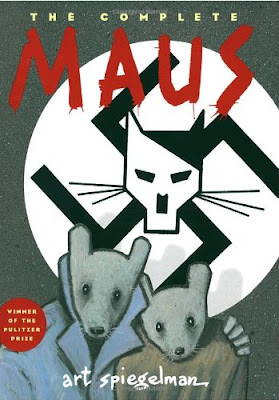1. How is the work illustrated? Be specific: would you characterize it as sketchy, realistic, cartoony, artistic, ornate, spare, expressionistic, tight, loose, etc.? What is the overall feel of the artwork, and what kind of tone does it create for the reader? Do you feel it is the uniquely suited to the story being told? Consider the differences between Crumb and Cavey’s illustrations for Pekar’s American Splendor.
The Sandman’s illustrations were artistic to say the least. It certainly wasn’t realistic, but more stylistic. It reminded me of the artwork in Batman: Year One, only harsher and darker. The art definitely complimented the dreamy nature of the story and the main character Dream/Morpheus/ the Sandman. The Sandman story is dark and twisted and full of symbolism, and the artwork uses this tone to amplify the atmosphere created by the plot and characters than inhabit this universe where Dream and Death are anthropomorphized into living, breathing (though still not real) incarnations.
2. Why was this story written as a graphic novel? What might this story lose if translated to a novel, short story, or even a film? What elements of the story almost require the juxtaposition of words and images? In other words, what does the comic format allow us to see and experience that a traditional novel wouldn’t? Again, be as specific as possible.
This story would be next to impossible to present in any other form. While technically it could be done as a book or film, it would lose too much, in my opinion, to have the same confused yet still understandable feeling that the graphic novel approach provides. As a book, you’d lose most of the visual symbolism that in the graphic novel. While an author could describe these scenes that are presented visually, I think the impact of actually seeing the images would be lessened too much to justify. And while a film could theoretically show you these images on screen, it would be very difficult for the audience to follow along without getting completely lost. Too often I had to go back and look at the artwork to really understand what was happening in the story. Not to mention, with the graphic novel approach I was able to study the drawings at my own pace and appreciate the images and understand the images better because to that.
3. Who narrates the story? How do they do this? Traditionally, narration is told from either a third-person or first-person perspective; how does a graphic novel challenge this approach? Consider how the form of comics ‘tells’ a story and allows us to see multiple points of view within a single narrative frame.
There are multiple narrators throughout the story. Sometimes it’s the main character himself doing the narrating, other times its some omniscient third person perspective, and in several cases we see the story unfold through other characters (like John Constantine) that show up for a short period and are then gone for the rest of the novel. This goes back to question two, as this would be almost impossible to pull off in another medium without confusing the audience.
4. Describe one scene in the novel, either a single frame or a series of frames, which you feel is particularly significant. Why is this sequence so important? Do you admire this passage more for its narrative (the words) or its art (the images)—or both? Make sure we can not only see what’s going on here, but we see how it relates to the story at large.
There are two parts in the novel that really jumped out at me more than anything else. The first is when Dream calls upon Hecateae (or Hecate from Greco-Roman mythology). I loved this part because of its mythological significance and background (I always love it when stories reference or incorporate classical mythology). I thought the scene was creatively done and it really is the jumping off point for the adventure Dream is embarking on for the bulk of the novel. The second part that I really enjoyed and thought was significant is when Dream is battling a demon for his helmet (that’s more of a mask really). Instead of a typical physical battle, they have a battle of wits. The demon will say that he is a thing or creature of some sort, and then Dream will say that he something else that will destroy the demon and it will go back and forth until one of them can’t respond. It was an interesting part because it would have been easier to have them battle like you would imagine a comic book normally would—through some physical or magical confrontation—but it doesn’t. In the end, Dream defeats the demon by saying that he is the one thing that can’t be destroyed . . . “I am hope,” Dream says.
























.jpg)